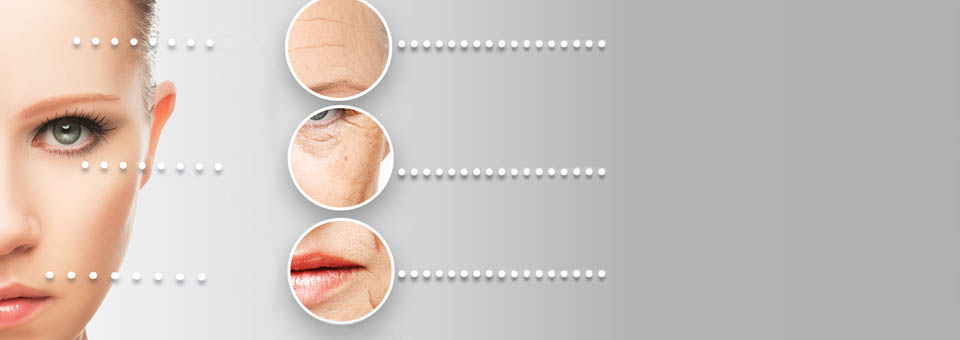
We’ve figured out how to harness your body’s own potent healing powers in human growth factors (HGFs).
We have known for years that your body makes HGF proteins to repair damage. And these HGFs are critical to heal wounds and regenerate injured tissues.1
But I want you to understand just how amazing this latest anti-aging discovery is.
Think of HGFs as biochemical messengers. They carry messages from your body’s stem cells to damaged tissues.
You already know that stem cells are the body’s master cells.
They are also the ultimate natural cure. Whenever you have damaged skin, stem cells travel to the injured site. They act as first responders. They take charge of the scene and give orders to the local cells and tissues.
Human growth factors carry those healing messages.
Until recently, the only way to access these HGFs was through stem cells extracted from bone marrow. But getting stem cells from bone marrow is difficult and painful.
Now researchers have discovered another abundant source of human stem cells that contain these same HGFs.
I’m talking about adipose or fat deposits. You see, the fat in your body is a storage facility for stem cells that can also produce these same growth factors. In fact, we can obtain about 40 times more stem cells from fat tissue than from bone marrow.2
Scientists call these cells “adipose-derived stem cells” or ADSCs.
Studies show that ADSCs stimulate collagen synthesis.3 They also protect skin cells from oxidative damage and UVB radiation.4 And when ADSCs are injected into the skin, they’ve been shown to increase the thickness of the skin layers and reduce wrinkles.5
But working with these stem cells directly has posed a problem for scientists. ADSCs are difficult to grow in a lab. And they aren’t stable enough for use in skin care products.
That’s where this new discovery comes in.
Researchers found a way to get the benefit of stem cells without using the cells themselves. Here’s how it works.
When ADSCs are bathed in a special solution, they release lots of the human growth factors that rejuvenate skin.6 If you apply the solution containing the HGFs, the impact is simply revolutionary.
In fact, the stem cell bath has been found to be MORE effective than the stem cells for healing skin.7
One clinical study looked at 14 patients with sun damage on their faces. They were given a facial cream containing multiple types of HGFs. They applied the cream to their face twice daily. After 60 days, fine lines and wrinkles around the eyes dropped 14.1%.
In addition, collagen formation increased 36% and the thickness of the epidermis expanded 30%.
In other words, by applying a cream containing these HGFs, women were able to stimulate the repair of sun damage to their skin. They formed new collagen and their skin plumped up. Their face appeared smoother with less wrinkles.8
In another study, 12 patients with facial wrinkles applied a growth factor cream on half their face twice a day. On the other half, they applied a cream without HGFs. After three months, the researchers saw a 21.7% improvement in wrinkles from the HGFs.9
Based on this breakthrough science, I’ve created a rejuvenating serum using human ADSC technology. I use an ADSC bath solution. It’s rich in the healing growth factors, but doesn’t contain the stem cells themselves.
I tried it on myself. I put it on some scar tissue on my upper right cheek. In just weeks, the scar tissue disappeared. The skin had regenerated itself. It’s now as smooth and flawless as the skin of a newborn baby.
I’ve been offering my new Regenesis skin serum to women who visit my Sears Institute for Anti-Aging Medicine, as well as to my own staff. The results have been simply amazing.
This formula stimulates the skin’s natural renewal process. It triggers collagen to rebuild itself. It repairs and prevents age spots and sun damage. It evens out skin tone. It reduces sagging around the eyes, cheeks, and mouth. And it smoothes skin, erasing fine lines and wrinkles.
I’m currently the only one in the country with this formula. Mainstream medicine won’t catch on for decades.
I’ve never been more excited about an anti-aging breakthrough.
To Your Good Health,
Al Sears, MD, CNS
1. Bennett NT, Schultz GS. “Growth factors and wound healing: biochemical properties of growth factors and their receptors.” Am J Surg. 1993;165:728–737.
2. Boquest AC, Noer A, Collas P. “Epigenetic programming of mesenchymal stem cells from human adipose tissue.” Stem Cell Rev2006:2:319–329.
3. Kim WS, Park BS, Sung JH, Yang JM, Park SB, Kwak SJ, Park JS. “Wound healing eVect of adipose-derived stem cells: a critical role of secretory factors on human dermal fibroblasts.” J Dermatol Sci 2007:48:15–24.
4. Kim WS, Park BS, Kim HK, Park JS, Kim KJ, Choi JS, Chung SJ, Kim DD, Sung JH. “Evidence supporting antioxidant action of adipose-derived stem cells: protection of human dermal fibroblasts from oxidative stress.” J Dermatol Sci 2008:49:133–142.
5. Kim WS, Park BS, Park SH, Kim HK, Sung JH. “Antiwrinkle effect of adipose-derived stem cell: activation of dermal fibroblast by secretory factors.” J Dermatol Sci 2009: 53:96–102.
6. Won-Serk Kim, Byung-Soon Park, Jong-Hyuk Sung. “Protective role of adipose-derived stem cells and their soluble factors in photoaging.” Arch Dermatol Res (2009) 301:329–336.
7. Pravin J Mishra, Prasun J Mishra, Debabrata Banerjee. “Cell-free derivatives from mesenchymal stem cells are effective in wound therapy.” World J Stem Cells 2012; 4(5): 35-43
8. Fitzpatrick RE, Rostan EF. “Reversal of photodamage with topical growth factors: a pilot study.” J Cosmet Laser Ther. 2003;5(1):25-34.
9. Ehrlich M, Rao J, Pabby A, Goldman MP. “Improvement in the appearance of wrinkles with topical transforming growth factor beta(1) and 1-ascorbic acid.” Dermatol Surg 2006:32: 618–625.








